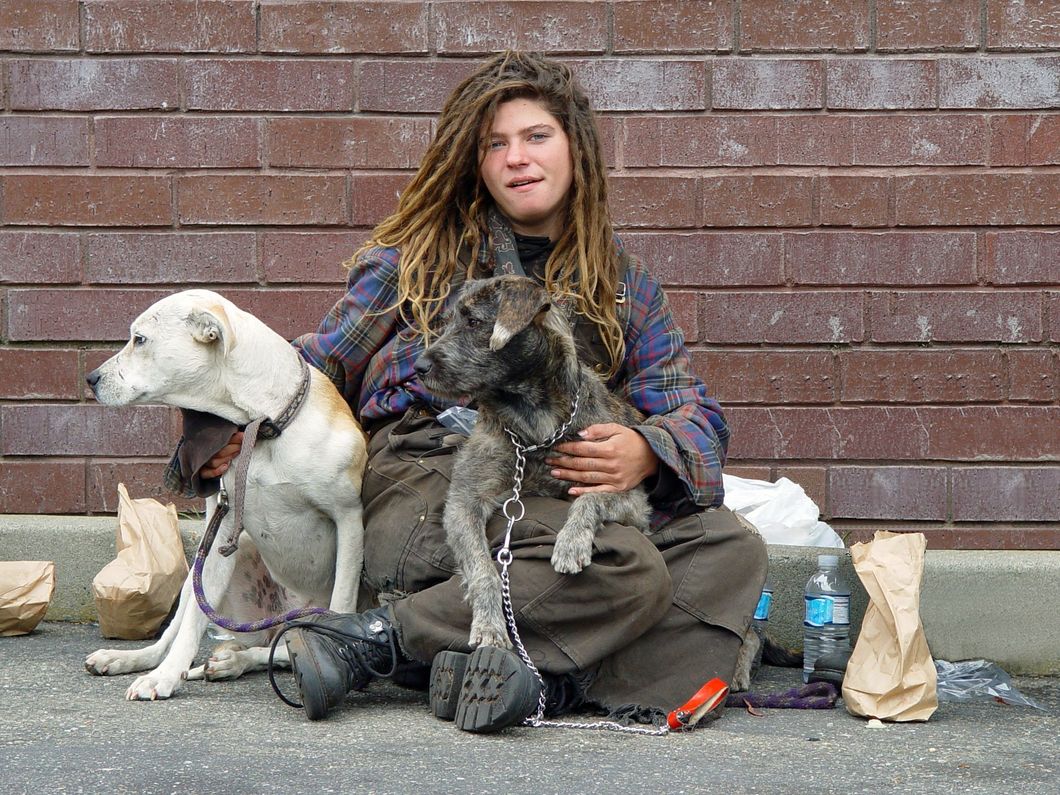I was lucky enough to be born into a loving family and have a supportive group of friends. However, many people are not. Even as we work toward a world where being LGBTQ+ is met with this love and support and embracing one's identity is a right for all, we continually fail queer youth experiencing homelessness. When working with young people in LGBTQ homeless shelters, I realized that the way we give is sometimes not what is best for the individuals we hope to benefit; if anything, it can be damaging to both the youth and the shelter. Because there are over 1.6 million homeless youth in America, over 40% of which identify as LGBTQ+, we need to learn how to give in a way that truly makes a difference.
When we consider helping homeless youth, some people's first thought is to donate what they do not use. Donating in this manner is well-intentioned but often ultimately ineffective. Oftentimes, we give what we think others need, rather than what homeless youth actually need. Earlier this summer, I met with MaDonna Land, director of Tony's Place, an LGBTQ+ drop-in center for housing insecure youth. She told me that "bare necessities are not always those we think about… what we need isn't just toiletries and worn out t-shirts, but we get plenty of those. We really need items such as good jackets for the winter, USB drives for job applications, and socks, but we never get enough."
Even worse, these items -- of which shelters often have enough -- can often hurt more than they help. Land explained that when we give an excess of the same items, it often turns into a logistical struggle for homeless shelters in the area, as these items fill up valuable space, take countless hours to sort, and have costly cleaning fees. Not only can our donations create a logistical disaster for shelters, it can mean our donations are a burden rather than a benefit for queer youth.
Even when we do end up giving what is in demand, donations are often in a state of disrepair, which can be painful to homeless LGBTQ+ youth. "I'm grateful for everything that's donated," says Aabriella, an eighteen-year-old homeless teenager. "It really can make a huge difference, but sometimes… only getting old and broken stuff, it hurts us." Throughout my work with Tony's Place and other homeless shelters, the majority of items we have received have been stained, torn, or otherwise unusable. Giving in this way is often dehumanizing, even if you have good intentions.
Land explains that the way people often give "makes homeless youth feel less than what they are. It forces them to think, 'you were thrown out by your parents, and, now, here are my scraps.'" Not only does this cripple an individual's self-worth, it makes them feel undeserving. It perpetuates the feeling that they do not matter, and one of the biggest challenges to helping these kids is getting them to believe that they can get the job they are applying for, that they are deserving of a better life. All of that work becomes far more difficult when people are treated less than animals.
We must decide why are we giving. Are we giving because we want to get rid of worthless items, or are giving because we want to better the lives of those who truly need it? If we want to help, we need to make sure that we follow two guiding principles of giving.
First, call ahead of time.
Before we give, we should ask about what the shelters need. If you want your donation to make a difference, the shelter would know how you can best help. Oftentimes they need items that we all have but do not think to give. I have attached a list of commonly overlooked items, but this is not a complete list and it might not represent the needs of those experiencing homelessness in your area. Sometimes, needs go beyond what is seen as essential. Do not just give the bare minimum. Give what your teenage self would have wanted. Living homeless does not mean teenagers no longer have the same wants and desires that we all experienced at that age. It's not only about what you think to give, it's about what can make a difference in the lives of others.
Second, only give what you would want to use yourself.
Torn up, stained, and damaged items have no reason to be donated. Land shared, "sometimes the kids have to keep wearing the same clothes for days because the clothes that are here are completely unusable." As a rule of thumb, ask yourself if you would use what you are giving. If you would not, they probably cannot. In a conversation I had with Anna, a queer teenager I met at Tony's Place, she told me that she appreciates all the donations that come through the door with all her heart– but when 50 brand new Adidas jackets were donated, it completely changed her outlook on her situation. "How would you feel about having something new to wear for the first time in your life?" She asked while proudly wearing her one-year-old Adidas jacket. It doesn't have to be new, she explained. It just has to be usable.
Throughout my time at Tony's Place, I have learned that when we give, we have the potential to touch and impact lives far beyond what I thought was possible, and it becomes all the more important to make what you decide to give matter.




















